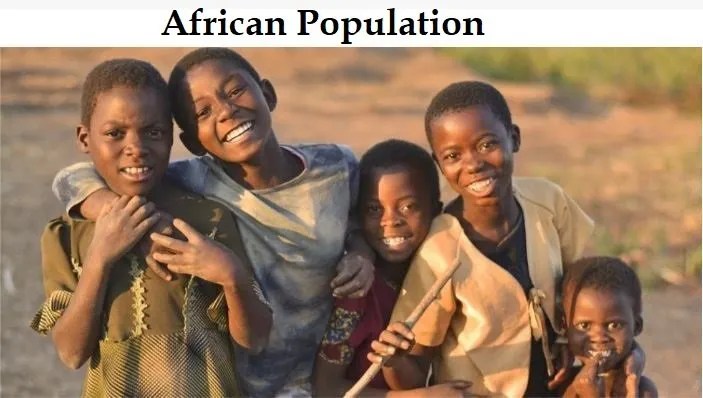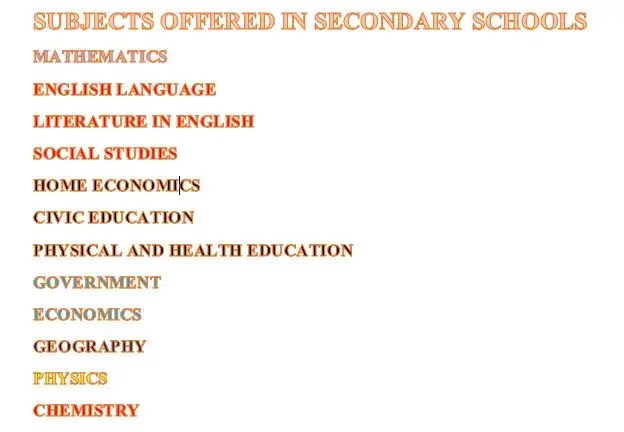
Africa is the world’s second-largest and second-most populous continent, with an estimated population of 1.2 billion people in 2016. Africa’s current population is 1,405,267,705, with urban areas housing 43.8 percent of the continent’s population. Africa is made up of 54 countries, and while population growth is relatively low in some areas, countries such as Nigeria and Uganda are growing rapidly. Most African countries experience annual population growth rates in excess of 2%.
Nigeria, Africa’s most populous country, the country with the most black people and is currently ranks as the most popular black nation in the world. As China’s population shrinks and India plateaus, Nigeria will reach nearly 1 billion people by 2100 nearly surpassing China, according to the UN. Given that the country is roughly the size of Texas, this is quite remarkable. Nigeria’s population is expected to grow by a factor of eight in just two or three generations, making it one of the world’s fastest growing countries.
The growth in Africa’s population will be concentrated in Sub-Saharan Africa, including Tanzania, one of the world’s poorest countries. Only 13 years ago, the country’s population was 34 million, but it is expected to grow to 65 million by 2100, which is close to the current population of the United States. Below is a list of the 50 most populated countries in Africa.
50 Most Populated African Countries 2024
- Nigeria: Nigeria: With a population of 216,407,517, Nigeria is the most populous country in Africa and the seventh most populous country in the world. Nigeria’s population is expected to reach 401.31 million by the end of the year 2050.
- Ethiopia: With a population of 120,686,526 people, Ethiopia is the second most populous country in Africa and the world’s 12th most populous country. Ethiopia’s population is expected to exceed 200 million by the end of 2049, growing at a rate of about 2.7 percent per year with no projected peak year or period of decline. Due to its rapid population growth, Ethiopia remains one of the world’s poorest countries.
- Egypt: With a population of 106,213,588, Egypt is the third most populous country in Africa and the 14th most populous country in the world. According to current projections, Egypt’s population will more than double by 2078. The population is currently growing at a 1.94 percent annual rate, which adds approximately 2 million people to the population.
- Democratic Republic of the Congo (DR Congo): With a population of 95,033,279, DR Congo is the fourth most populous country in Africa and the 16th most populous country in the world. The Democratic Republic of the Congo has one of the world’s highest population growth rates, at 3.19 percent. With a current population of approximately 95 million, DR Congo is expected to surpass 100 million in 2024 and more than double by 2047.
- Tanzania: Tanzania has the 23rd largest population in the world and the 5th largest in Africa, with 63,153,490 people. Tanzania’s population is currently growing at a 2.98 percent annual rate. Unfortunately, Tanzania’s rapidly growing population means increased poverty and income inequality.
- South Africa: South Africa has the sixth largest population in Africa and the 24th largest population in the world, with 60,811,610 people. South Africa’s population is growing at a rate of 1.28 percent per year. South Africa’s population growth is expected to continue, albeit at a slower rate than in the previous century, with annual growth falling below 1% by 2026. South Africa’s population is expected to reach 64,465,553 by 2030.
- Kenya: With a population of 51,357,844, Kenya is the seventh most populous country in Africa and the world’s 28th most populous country. Kenya’s population has more than doubled in the last 20 years. The current annual rate of change of 2.52 percent is expected to fall to 2.20 percent by 2030.
- Uganda: With a population of 48,643,982, Uganda is Africa’s eighth most populous country and the world’s 30th most populous country. Uganda’s population is growing at a rate of 3.32 percent. In Uganda, the growth rate has remained around 3% for several decades. The rapid population growth in Uganda is cause for concern. Rapid urbanization, poor waste management, high poverty, unemployment, environmental degradation, and inadequate infrastructure are among the issues mentioned.
- Sudan: With a population of 45,906,833, Sudan is the ninth most populous country in Africa and the world’s 33rd most populous country. Sudan is expanding at a rapid pace of 2.42 percent per year. Every year, this rate adds over one million people to the population. Sudan is expected to reach 100 million people by 2064, according to current projections.
- Algeria: Algeria has a population of 45,442,498 people, ranking 10th in Africa and 34th in the world. Algeria is currently growing steadily. Algeria’s population grows at a rate of 1.85 percent per year, adding over 800,000 people each year.
- Morocco: Morocco is the 11th most populous country in Africa and the 39th most populous country in the world, with a population of 37,789,868 people. Morocco’s population is growing at a 1.2 percent annual rate, which has recently slowed slightly. Morocco’s total population has increased by 180 percent over the last 50 years and has risen year after year for a decade. Morocco’s population is expected to grow in the future, though not as quickly as other African countries. Morocco’s population growth is slowed slightly by negative net migration of approximately 50,000 people per year.
- Angola: With 34,920,826 people, Angola is the 12th most populous country in Africa and the 42nd most populous country in the world. According to current projections, Angola’s rapid population growth will continue in the coming decades. Its most recent population growth rate of 3.27 percent adds over one million people to the country’s population each year.
- Mozambique: Mozambique has a population of 33,015,223 people, ranking it as the 13th most populous country in Africa and the 46th most populous country in the world. Mozambique’s GDP grows at a 2.93 percent annual rate.
- Ghana: Ghana has 32,376,508 people, making it the 14th most populous country in Africa and the 47th most populous country in the world. Ghana is currently expanding at a 2.15 percent annual rate. Experts are concerned about Ghana’s population growth because the country is unprepared to meet the dramatically increased demands for food, water, sanitation, education, and employment that come with a rapidly growing population.
- Madagascar: Madagascar is the 15th most populous country in Africa and the 51st most populous country in the world, with a population of 29,121,665. Madagascar is currently growing at a 2.68 percent annual rate. Madagascar’s rapid population growth is putting enormous strain on the country. Many people in Madagascar are already impoverished, the economy has stalled, and health care and education are struggling. Furthermore, infrastructure has deteriorated, tax revenues have decreased despite population growth, and food insecurity is a threat.
- Cameroon: Cameroon is the 16th most populous country in Africa, with a population of 27,873,844. Despite negative net migration, Cameroon’s population is growing at a 2.59 percent annual rate, adding over 600,000 people to the population.
- Côte D’Ivoire: With a population of 27,691,012, Côte D’Ivoire is Africa’s 17th most populous country. Ivory Coast is growing at a 2.57 percent annual rate. Ivory Coast’s economy has grown in tandem with its population; however, rapid urbanization caused by a rapidly growing population must be controlled if Ivory Coast is to become a middle-income country within the next few decades.
- Niger: Niger has a population of 25,967,543, making it the 18th most populous country in Africa and the 56th most populous country in the world. Current projections indicate that Niger’s population will continue to grow for the rest of the century. By 2041, its population will have surpassed 50 million, and by 2068, it will have surpassed 100 million.
- Burkina Faso: Burkina Faso has a population of 22,055,178 people. It is the world’s 58th most populous country and Africa’s 19th largest population.
- Mali: Mali is the 20th most populous country in Africa and the 60th in the world, with a population of 21,423,022. Mali’s population is expected to grow for the rest of the century, based on current projections. Mali’s population is currently around 20.25 million people, with a projected increase to 50 million by 2058 and nearly 80 million by 2099. This means that the population of Mali will nearly quadruple in the next 80 years.
- Malawi: Malawi is Africa’s 21st most populous country and the world’s 61st most populous country. Its population is 20,123,385. Malawi’s rapid population growth will put the country’s ability to meet the needs of its people as well as its health, education, economic, and agricultural sectors to the test. Rapid population growth will also cause environmental degradation and a faster depletion of resources, such as clean water, as well as an increase in poverty.
- Zambia: Zambia is Africa’s 22nd most populous country and the world’s 63rd most populous country. Its population is 19,418,637 people. Zambia’s rapid population growth poses serious challenges to poverty levels and resource availability. Furthermore, public health programs will need to adapt quickly to a changing population, which is already a challenge.
- Senegal: Senegal is Africa’s 23rd most populous country and the world’s 69th most populous country. Its population is 17,630,673. Senegal, like many other African countries experiencing rapid population growth, is confronted with challenges in education, health care, resource depletion, and economic development as population growth outpaces these factors.
- Chad: Chad is Africa’s 24th most populous country and the world’s 70th most populous country. Its population is 17,373,084. Unfortunately, Chad is one of the world’s poorest countries. Rapid population growth can exacerbate Chad’s major problems, which include a high risk of floods and droughts, widespread poverty, and frequent civil war.
- Somalia: Somalia is Africa’s 25th most populous country and the world’s 73rd most populous country. Its population is 16,784,315. Somalia’s population growth rate is 2.92 percent, and it has been increasing since 2015. Despite the fact that net migration is negative, this rate adds approximately 450,000 people to the population. The country’s poor health care and instability are strained by Somalia’s rapid population growth.
- Zimbabwe: Zimbabwe is the 26th most populous country in Africa and the 74th most populous country in the world. Its population is 15,297,785. According to current projections, Zimbabwe’s population will continue to grow for the rest of the century.
- Guinea: Guinea is the 75th most populous country on the planet. Its population is 13,848,679. With so many people living in poverty, the rising growth rate is likely putting a strain on citizens’ finances.
- Rwanda: Rwanda is Africa’s 28th most populous country and the world’s 76th most populous country. Its population is 13,597,470 people. Rwanda’s rapid population growth has increased demand for food, infrastructure, and services that the country is not yet prepared to meet.
- Benin: Benin is the 29th most populous country in Africa and the 77th most populous country in the world. Its population is 12,761,350 people. Benin’s population is currently growing at a 2.73 percent annual rate, with over 322,000 people added to the population.
- Burundi: Burundi is the 30th most populous country in Africa and the 78th most populous country in the world. Its population is 12,602,476 people. Rapid population growth could pose a significant problem in Burundi, which is underdeveloped and one of the poorest countries in the world.
- Tunisia: Tunisia is the 31st most populous country in Africa and the 79th most populous country in the world. Its population is 12,067,171. Tunisia’s population will continue to grow until 2058, when it will reach a peak of around 13.96 million people.
- South Sudan: South Sudan is the world’s 83rd most populous country. Its population is 11,457,493. South Sudan’s growing population must contend with issues such as increasing population density, as much of the country is inhabitable and 33 percent of the population occupies only 7 percent of the land.
- Togo: Togo is the 33rd most populous country in Africa, with a population of 8,668,670. 43.3% of the population of Togo live in urban areas.
- Sierra Leone: Sierra Leone is the 34th most populous country in Africa, with a population of 8,303,007. 43.3% of the population of Sierra Leone lives in urban areas.
- Libya: Libya is the 35th most populous country in Africa, with a population of 7,059,089. 78.2% of Libya’s population lives in urban areas.
- The Republic of Congo: The Congo is the 36th most populous country in Africa, with a population of 5,791,048. 69.9% of the population of congo live in urban areas.
- Liberia: Liberia is the 37th most populous country in Africa, with a population of 5,296,585. 52.6% of the population of Liberia stays in urban areas.
- Central Africa Republic: The Central Africa Republic is the 38th most populous country in Africa, with a population of 4,998,540. 43% of the population lives in urban areas.
- Mauritania: Mauritania is the 39th most populous country in Africa. 56.9% of the population of Mauritania resides in urban areas.
- Eritrea: Eritrea is the 40th most populous country in Africa, with a population of 3,645,072. 63.3% of the population of Eritrea resides in urban areas.
- Namibia: Namibia is the 41st most populous country in Africa, with a population of 2,633,388. 55.2% of the population of Eritrea lives in urban areas.
- Gambia: The Gambia is the 42nd most populous country in Africa, with a population of 2,553,110. 59.4% of the population of the Gambia resides in urban areas.
- Botswana: Botswana is the 43rd most populous country in Africa, with a population of 2,447,055. 72.8% of the population of Botswana lives in urban areas.
- Gabon: Gabon is the 44th most populous country in Africa, with a population of 2,331,281. 87.1% of the population of Gabon lives in urban areas.
- Lesotho: Lesotho is the 45th most populous country in Africa, with a population of 2,176,380. Only 31.5% of the population of Lesotho lives in urban areas.
- Guinea-Bissau: Guinea-Bissau is the 46th most populous country in Africa, with a population of 2,061,480. 44.9% of the population of Guinea-Bissau resides in urban areas.
- Equatorial Guinea: Equatorial Guinea is the 47th largest country in Africa by population, with 1,495,614 people inhabiting it. 73.3% of the population of Equatorial Guinea lives in urban areas.
- Mauritius: Mauritius is the 48th largest country in Africa, with a population of 1,276,009 people inhabiting it. 40.8% of the population of Mauritius lives in urban areas.
- Eswatini(Swaziland): Eswatini (Swaziland) is the 49th largest country in Africa, with a population of 1,184,307 inhabiting it. Only 30% of the population of Eswatini lives in urban areas.
- Djibouti: Djibouti is the 50th largest country in Africa by population, with 1,016,877 people inhabiting it. 79% of the population of Djibouti lives in urban areas.
Many people are concerned about Africa’s population growth, which is expected to reach 2.4 billion people by 2050. By 2100, Africa is expected to account for more than half of global growth, with 4.1 billion people accounting for more than a third of the world’s population. Because the region has very high fertility rates and very little family planning, most countries will at least triple in population.
Because much of Africa is still developing and contains some of the poorest countries on the planet, only time will tell how it will be able to support such massive population growth.



